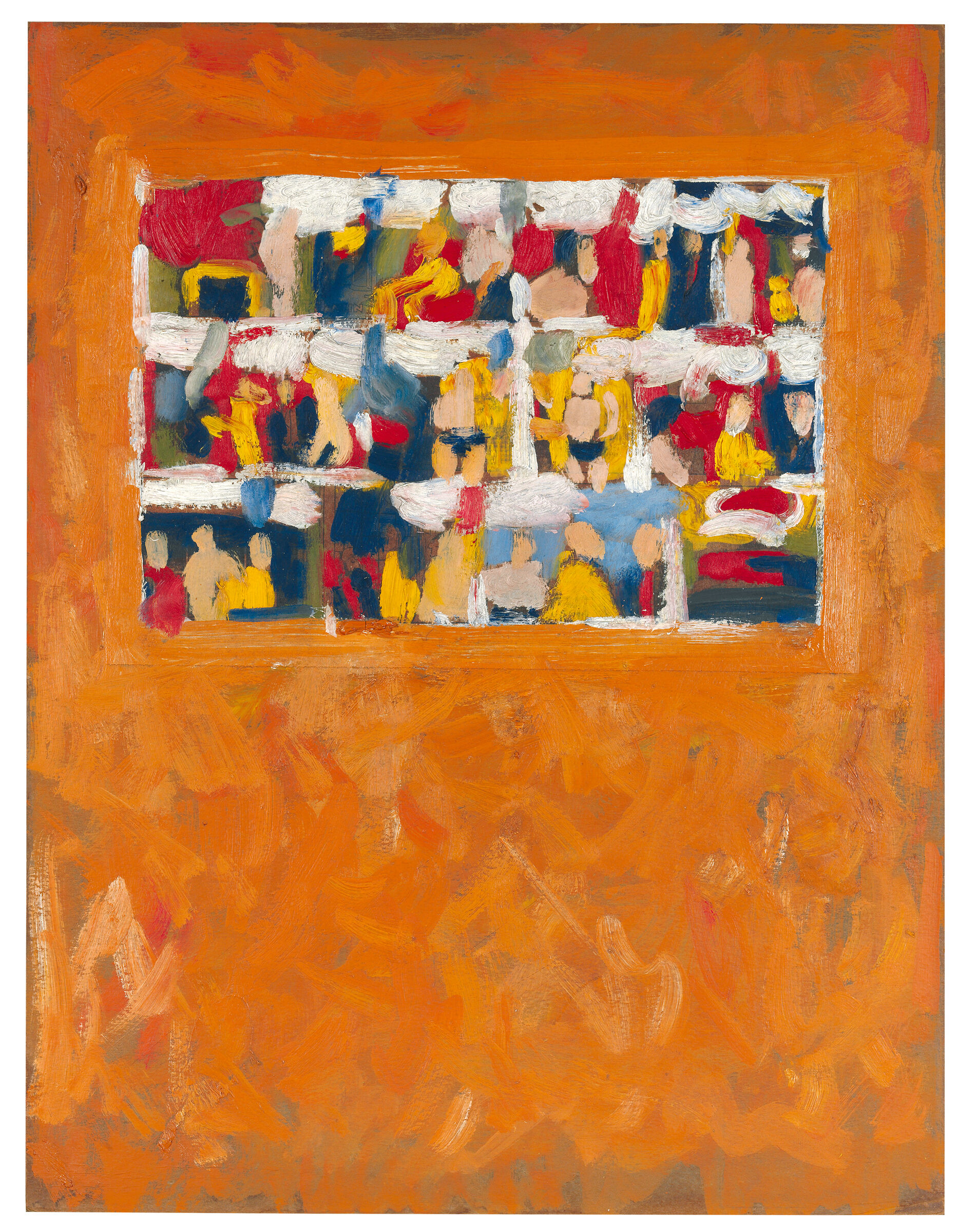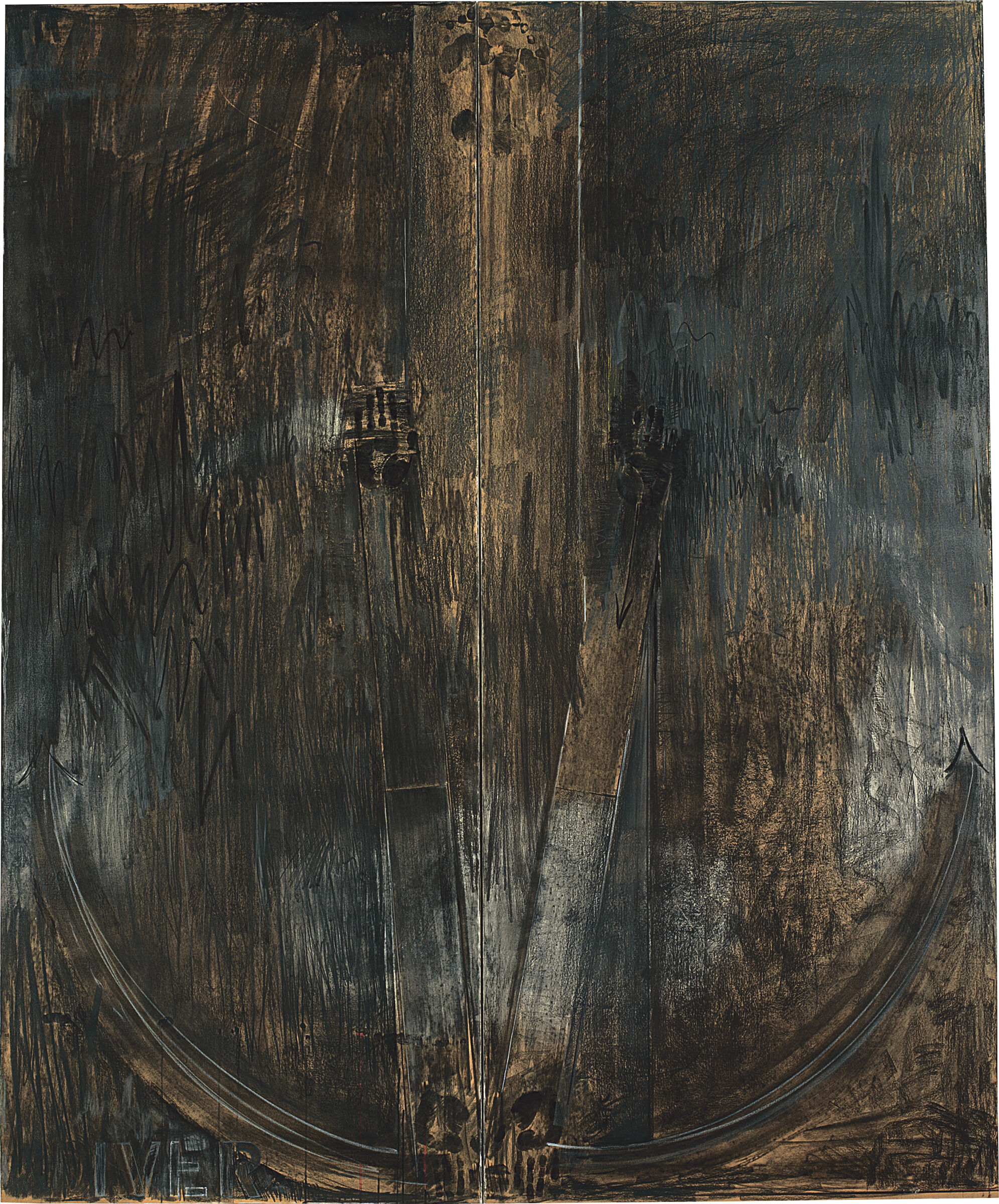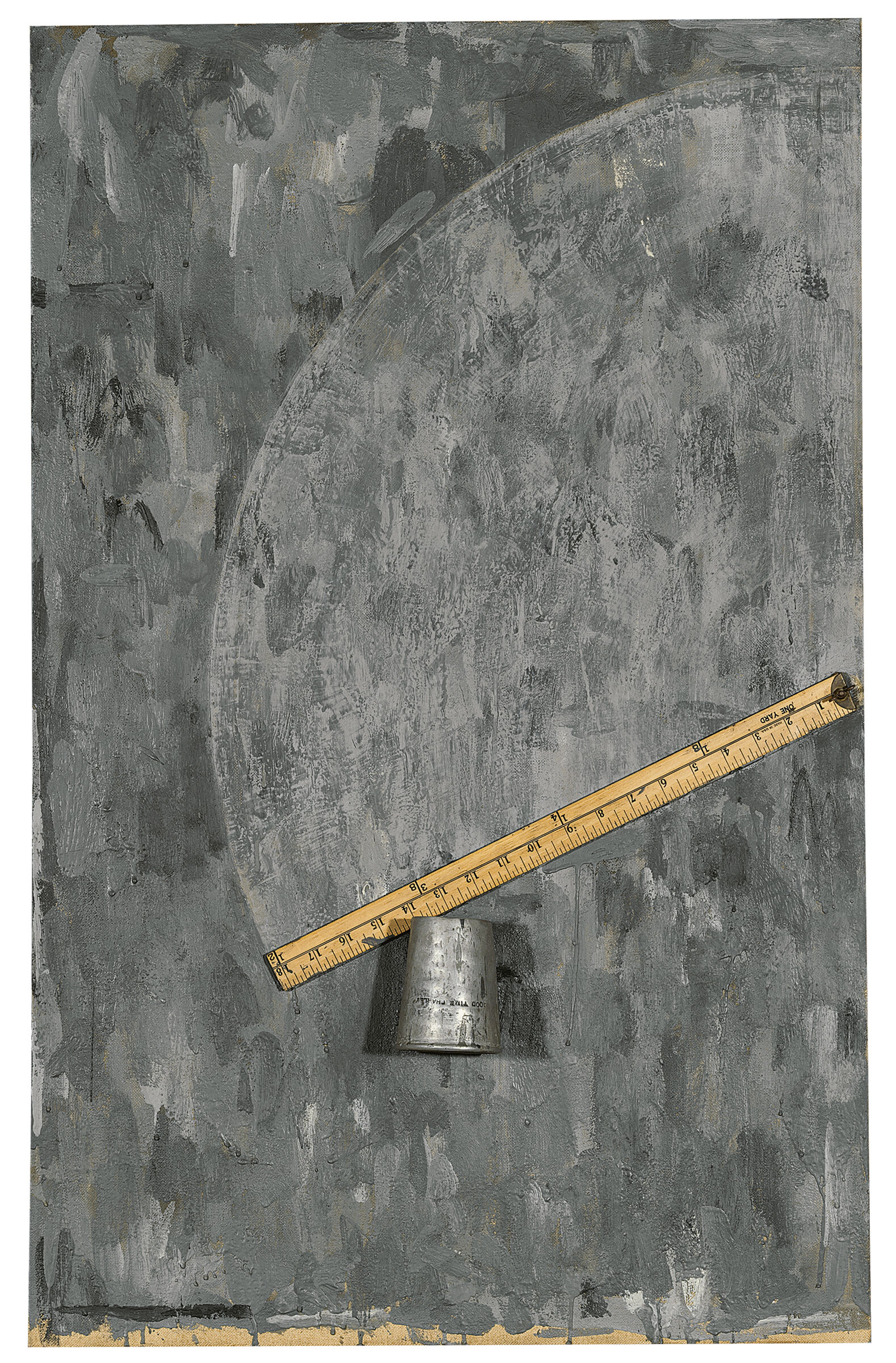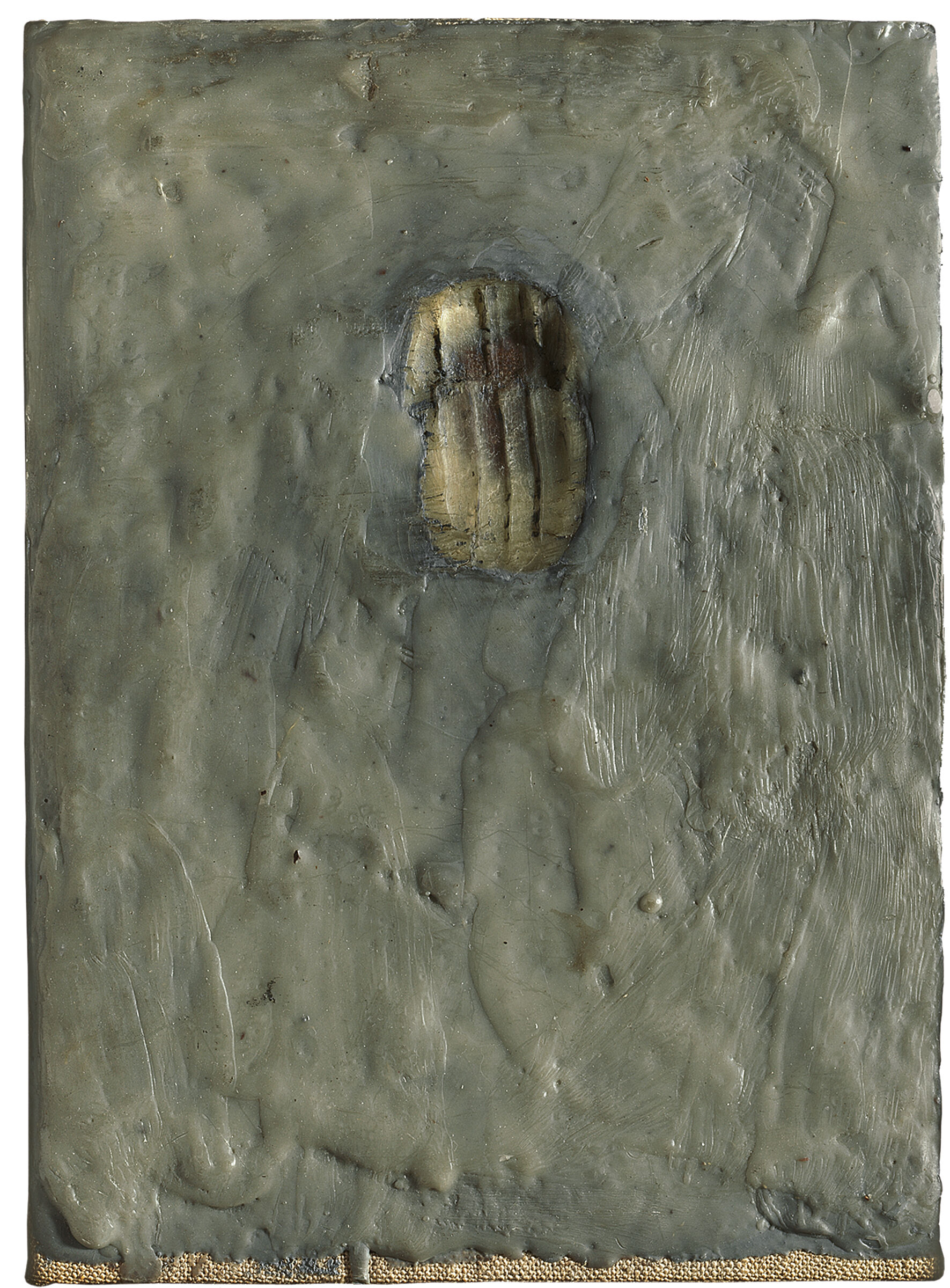Jasper Johns: Mind/Mirror | Art & Artists
Sept 29, 2021–Feb 13, 2022
Jasper Johns: Mind/Mirror | Art & Artists
Disappearance and Negation
2
Jasper Johns moved to New York in the summer of 1953, following his discharge from the army in his native South Carolina. An aspiring twenty-three-year-old artist, he arrived on a scene then dominated by the supposed heroism and soul-baring of Abstract Expressionism. But Johns soon fell in with a group of peers charting their own course, including the artist Robert Rauschenberg, with whom he began a romantic and creative relationship; the composer John Cage; and Cage’s partner, the dancer and choreographer Merce Cunningham. These connections exposed Johns to new ideas of chance and inspired an openness to everyday materials and actions. In the fall of 1954, as his friend Rachel Rosenthal remembered: “One day he destroyed everything, all the old work. It seemed as if his whole new conception was created in his mind.” For Johns, this was a declaration of independence from his own artistic past and from the leading styles of the day: “I decided to do only what I meant to do, and not what other people did.”
Johns shifted his work away from the then prevalent emphasis on an artist’s interior life and expression toward a cooler, more impersonal mode of painting. He embraced the deadpan depiction of common signs and objects, including flags, targets, and numbers, and explored gestures such as covering and hiding, often in pale grays or dense blacks. These acts of disappearance and negation can lend Johns’s art a somber and chilly air, full of loss, sadness, and even heartbreak.
The corresponding gallery at the Philadelphia Museum of Art focuses on the relationship between painting and everyday objects.






